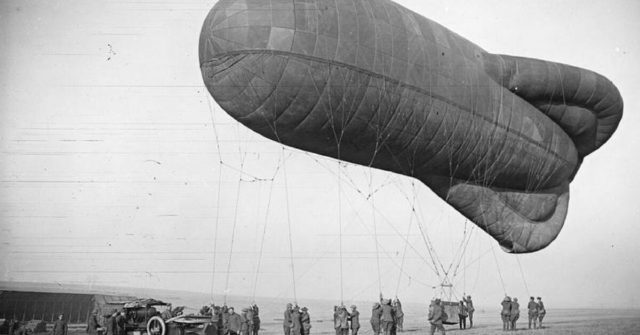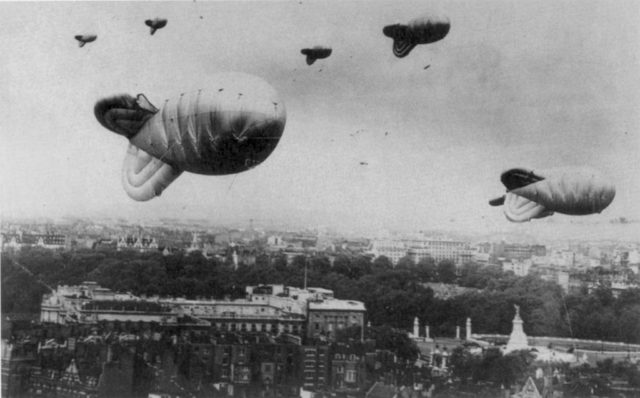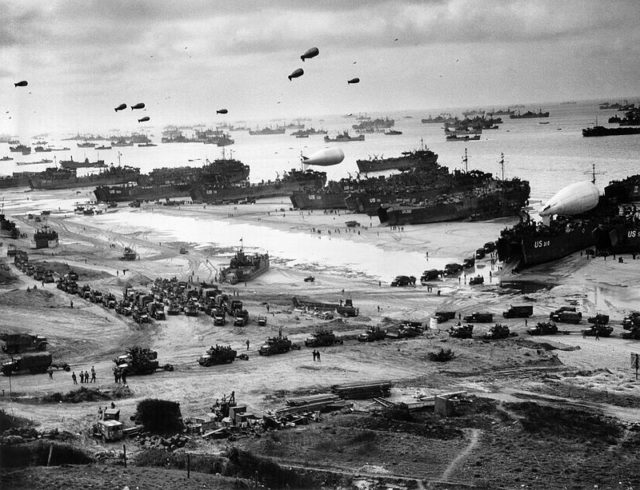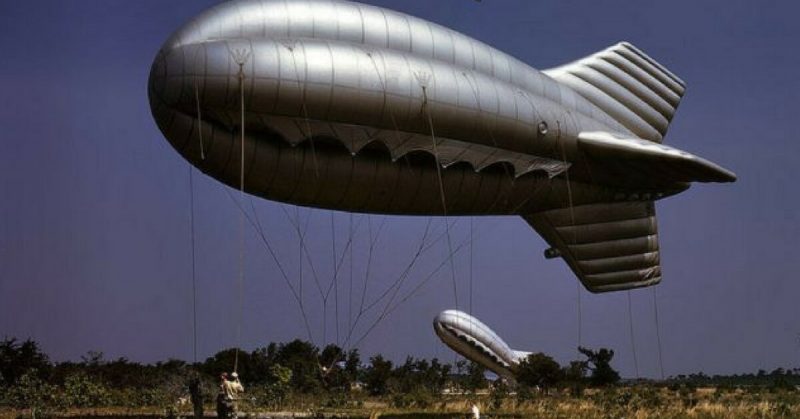Sometimes a relatively simple solution is the best one. Such was the case in using barrage balloons, often called “blimps,” in both the First and Second World Wars.
The zeppelin-shaped balloons served as anti-aircraft weapons against enemy airplanes. Metal cables stabilized them, and their shape could be adjusted to withstand harsh winds.
The barrage balloons could reach a height of 14,764 ft/4,500m. Planes traveling at high speed collided with the wires damaging or destroying themselves. On some occasions, explosive charges were strapped to the cables to ensure the destruction of attacking aircraft.

They were first utilized by France, Germany, Italy and the United Kingdom during the First World War. The balloons were often used in cities, to protect important buildings.
By 1918 London had developed a 50-mile net made of barrage balloons, providing protection against the most advanced German bombers at the time. Many reports from the period state that captured German pilots were terrified of the net. The only effective counter-measure were wire cutters installed on the wings of an aircraft. However, such measures would not be developed before the outbreak of WWII.

In 1938, the British established the Royal Air Force Balloon Command which was responsible for protecting cities, industrial facilities, harbors, and other places of strategic importance. The development of dive bombing tactics by the Germans at Guernica during the Spanish Civil War, and their devastating effect had served as a warning to the British Government.
The events in Spain hastened the preparations for resistance against a potential massive air invasion. Balloon Command began implementing tactics to prevent such attacks. The balloons were intended to force the dive bombers which flew optimally at the height of 1500m, to fly higher. They were then entering the concentrated anti-aircraft fire provided by AA guns.

Once the Battle of Britain began in 1940, it became apparent the balloons were useless against German high-altitude bombers. They were slightly more successful against V-1 flying bombs as the terror campaign continued. The barrage balloons destroyed 231 V-1 flying bombs.
The V-1 flew at 2,000 feet (600m) or lower. However, by now they were armed with wire cutters to counter the metal cables.
Although the balloons lost their effectiveness as the war progressed, they were produced in massive numbers, reaching 3,000 units by 1944.
Free flying balloons were also used as an offensive weapon. They were either packed with incendiary devices or carried trailing steel wires. The balloons were sent from Britain to disrupt the German power grid or to cause wildfires across the woodlands of the Third Reich.
After the war, the barrage balloons found an entirely different use in nuclear bomb testing. During the fifties, the tests were still conducted above ground, most often causing an explosion in mid-air. In such conditions, the barrage balloons served as transport, most notably during a series of tests codenamed Operation Plumbomb in 1957.
